As spring fades away and summer approaches things slow down in the orchid world and we can catch our breath, but there are still many orchids to look out for.
With the cooler weather conditions we are optimistic that the Leek Orchids Prasophyllum sp. will continue to flower during November. The flowers you are most likely to see belong to the ‘Otway Coast’ Heath Leek Orchid, Prasophyllum spicatum (Anglesea form). If you look closely at the wavy, broad labellum you will notice that it is just bent backwards to a vertical upright position and does not protrude past the short lateral sepals. This orchid is quite widespread in the district.
 ‘Otway Coast’ Heath Leek Orchid
‘Otway Coast’ Heath Leek Orchid
The last of our Sun Orchid species, Pallid Sun Orchids Thelymitra pallidiflora and Blotched Sun Orchids, T. benthamiana, are still waiting for the sun to shine although we have managed to see both species flowering during October and early November. It is very pleasing to see new colonies of the Pallid Sun Orchid that is listed as critically endangered in Victoria.
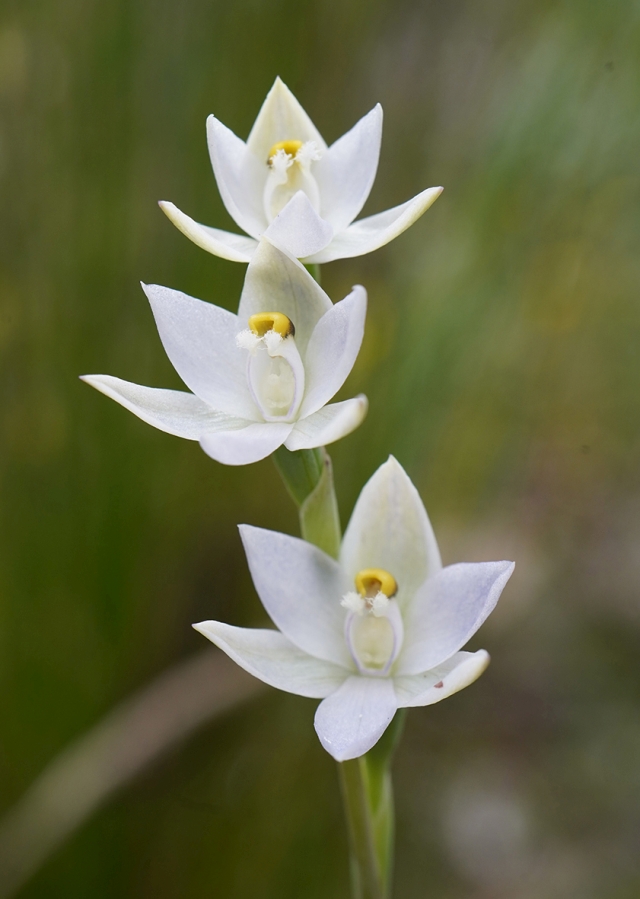 Pallid Sun Orchid
Pallid Sun Orchid
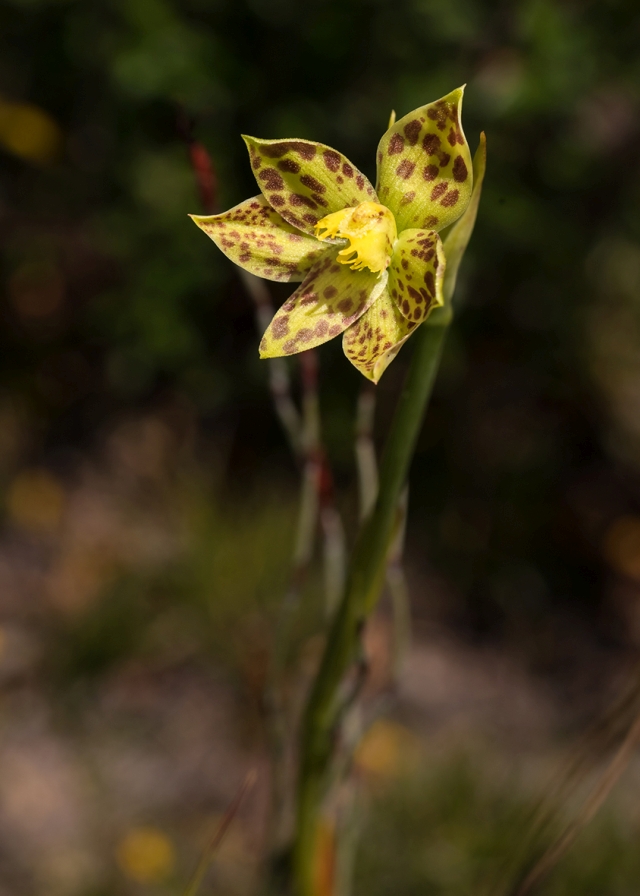 Blotched Sun Orchid
Blotched Sun Orchid
The Flying Duck Orchids, Caleana major, and the Small Duck Orchids, C. minor, are in flower in a number of sites. They are such attractive orchids and certainly delight viewers.
 Large Duck Orchid
Large Duck Orchid
 Small Duck Orchid
Small Duck Orchid
Onion orchids are flowering in many places and require a magnifying glass to distinguish the features and identify them to species level – perhaps a challenge for you to set yourself. The tiny labellum holds the key to identification. Make sure you have your Field Guide to help you.
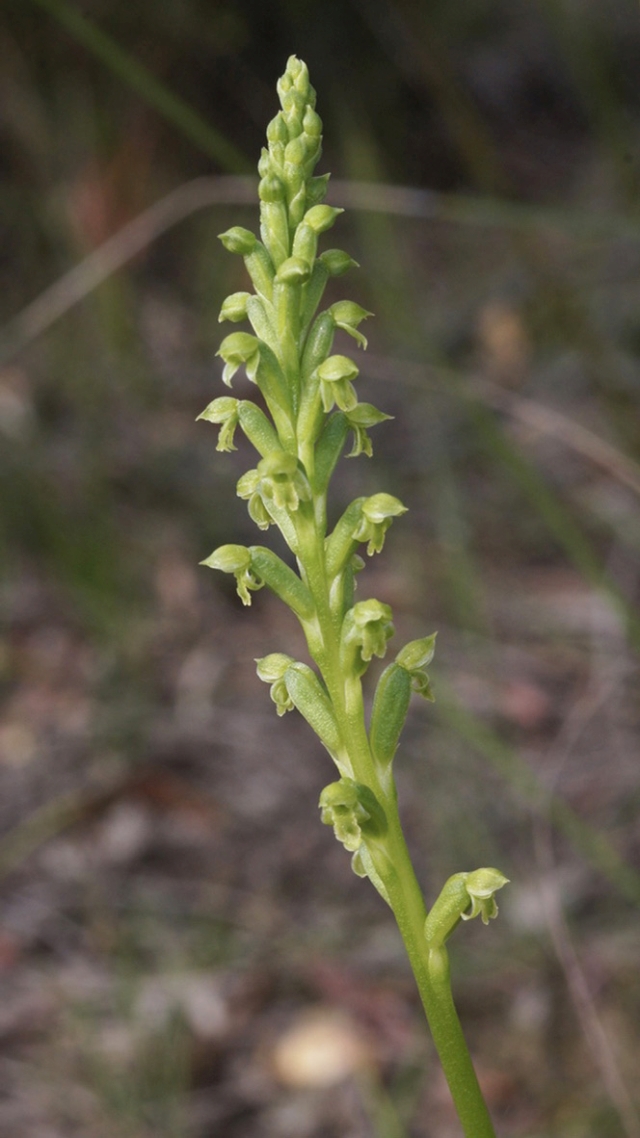 Common Onion Orchid
Common Onion Orchid
Thick brownish stems, occasionally green, of the Rosy Hyacinth Orchids, Dipodium roseum, are just starting to appear along the sides of tracks and within reserves. Attractive pink flowers will open in December and through summer.
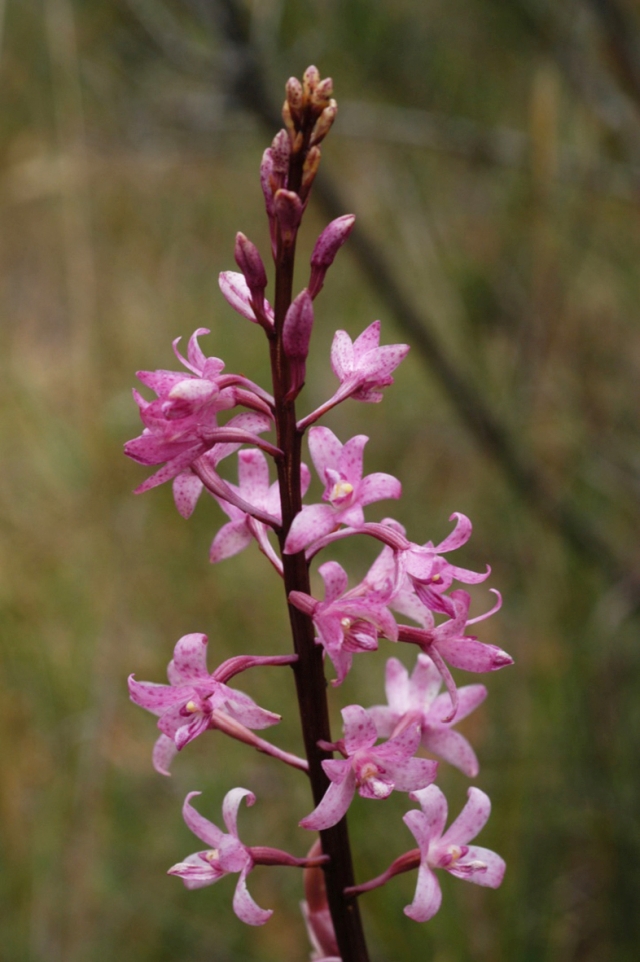 Rosy Hyacinth Orchid
Rosy Hyacinth Orchid
The extremely rare Spotted Hyacinth Orchid, D. pardalinum, should be flowering in January. Check the labellum and you will find it is white and red-spotted while the labellum of D.roseum is pink with darker stripings.
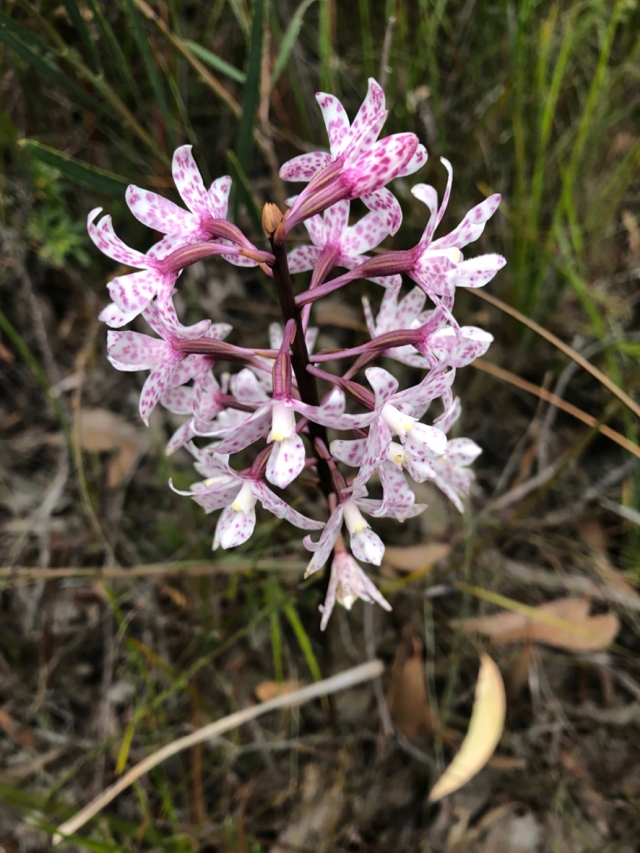 Spotted Hyacinth Orchid
Spotted Hyacinth Orchid
Keep your eyes out for Horned Orchids, Orthoceras strictum, and any greenhoods that might appear, as a greenhood that could be seen now in heathy woodland is the Dark-tipped Greenhood, P. atrans, which is an extremely rare orchid in our district. It has a dark tipped hood and should be the only greenhood flowering at this time. It has not been sighted for many years so please keep your eyes open as you walk the tracks.
 Horned Orchid
Horned Orchid
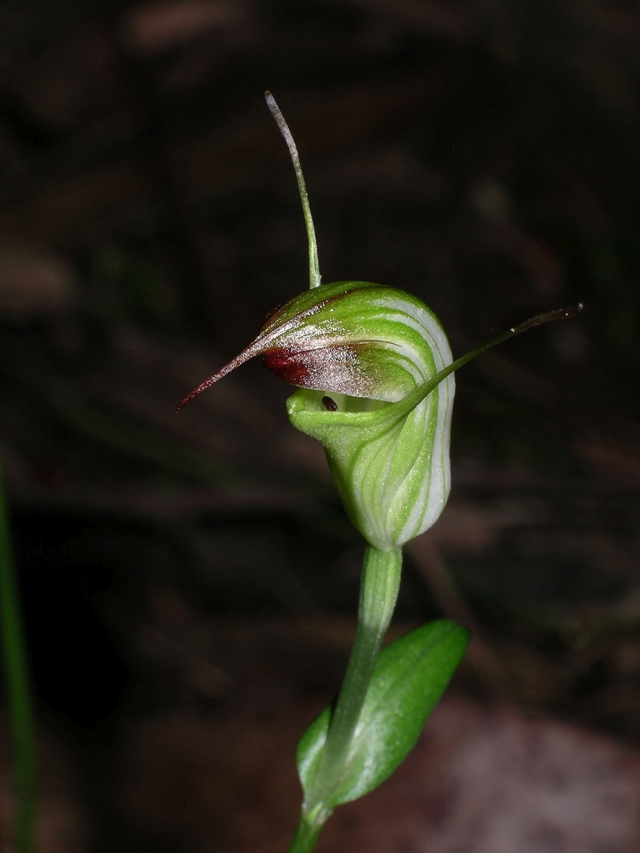 Dark-tipped Greenhood
Dark-tipped Greenhood
The Elbow Orchid, Thynninorchis huntianus, is a tiny orchid and difficult to see but is worth looking out for with its extraordinary extended column and hinged labellum designed to attract the wasp which enables pollination to occur. These orchids should flower in December and January.
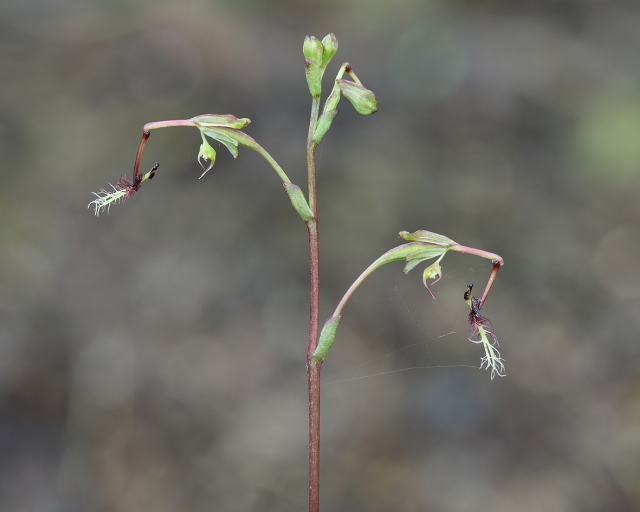 Elbow Orchid
Elbow Orchid
This is also the time to look for the extremely rare Large Tongue Orchid, Cryptostylis subulata that likes to grow in wet grasslands and moist habitats. The leaves are large, leathery and evergreen.
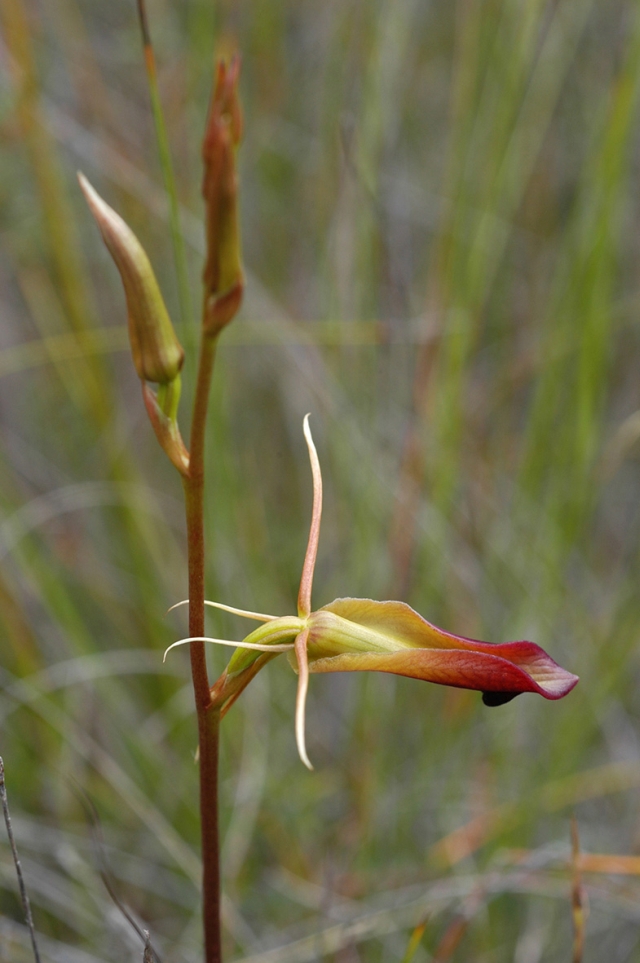 Large Tongue Orchid
Large Tongue Orchid
We hope you are enjoying your orchid experiences and also enjoying your copy of the new edition of Orchids of the Anglesea District. So many people have told us they are really enjoying using it. Please make sure you let us know of any unusual sightings you have. This is how we keep a complete record of orchids in the district.
All of our orchids are documented and photographed in Orchids of the Anglesea District. The new edition costing $30.00 is available from the Angair Natural History Centre on Monday and Thursday mornings, online on the Publications page on this website and from Anglesea News & Lotto and Great Escape Books in Aireys Inlet.
Margaret MacDonald margmacmoggs@icloud.com Alison Watson alisonw577@gmail.com